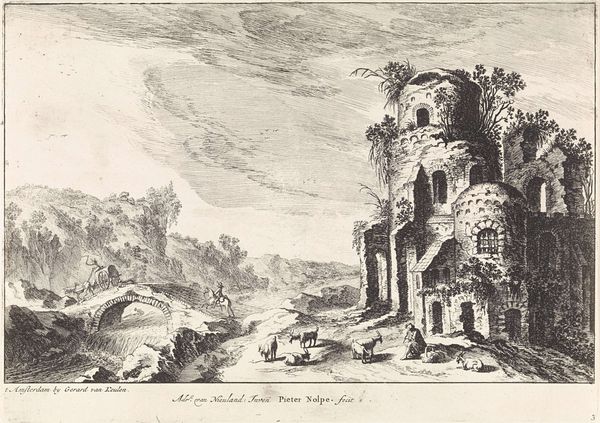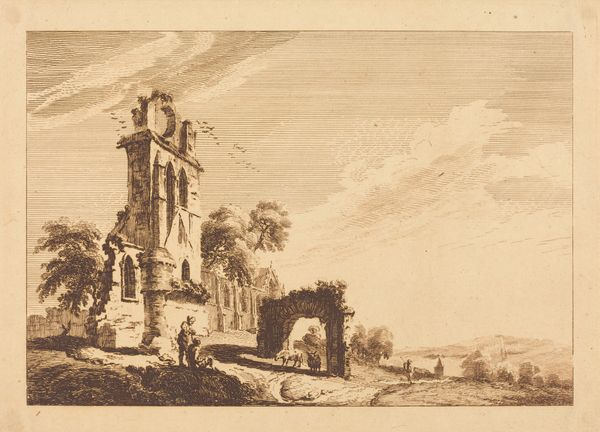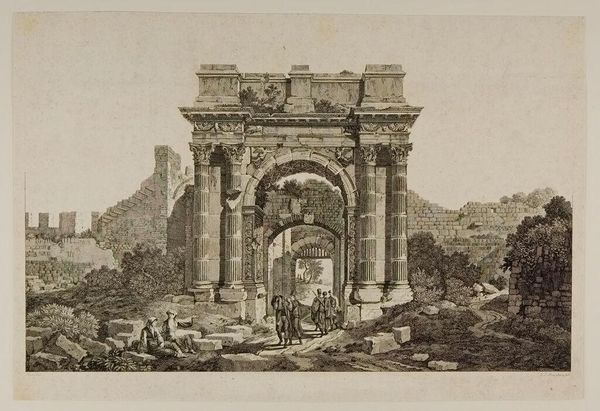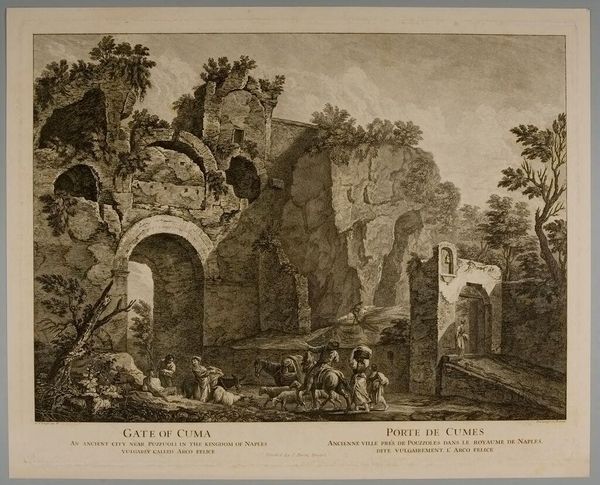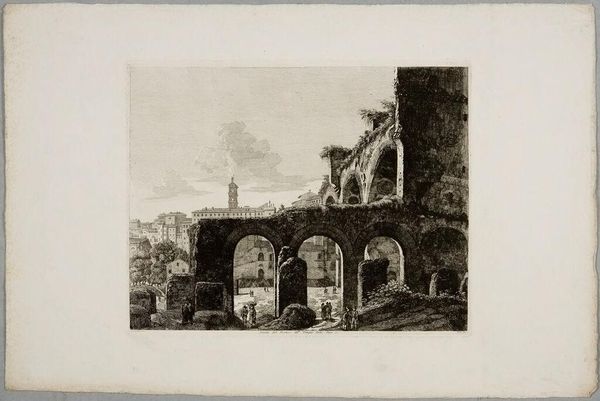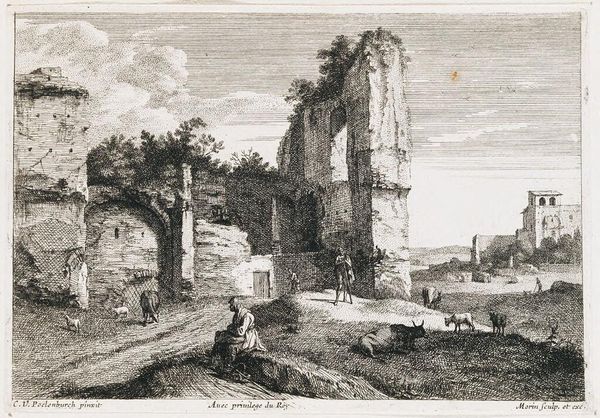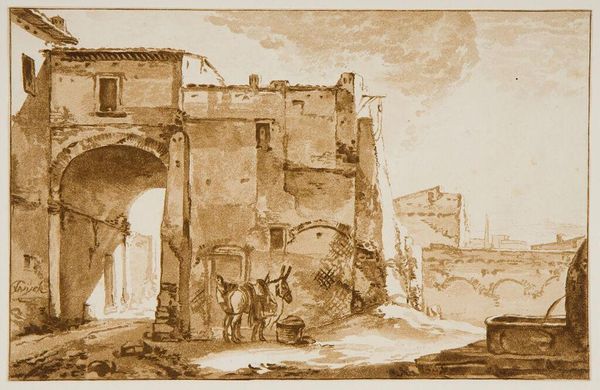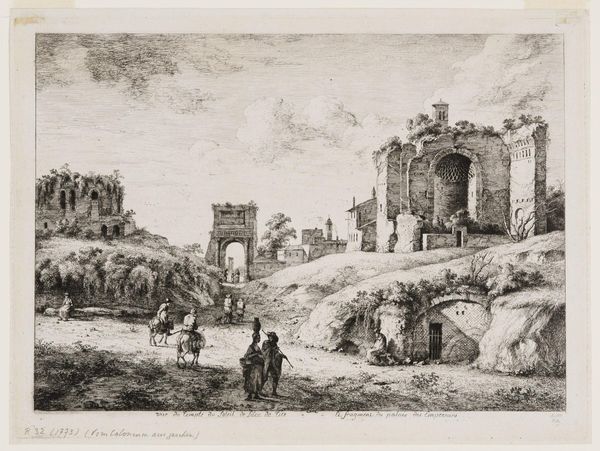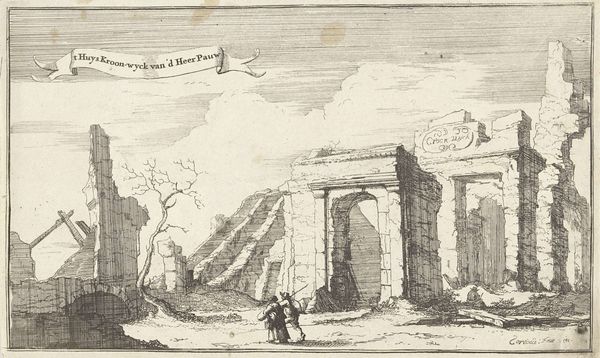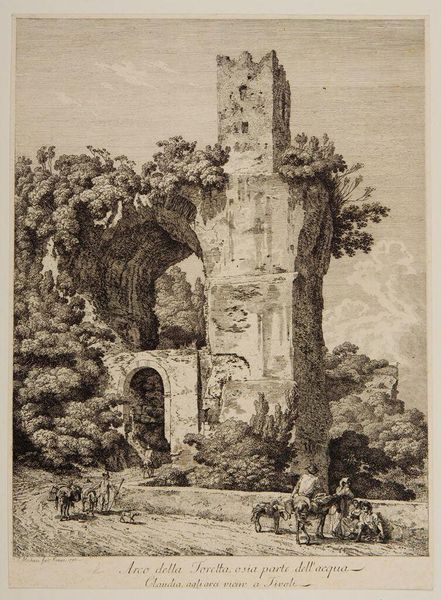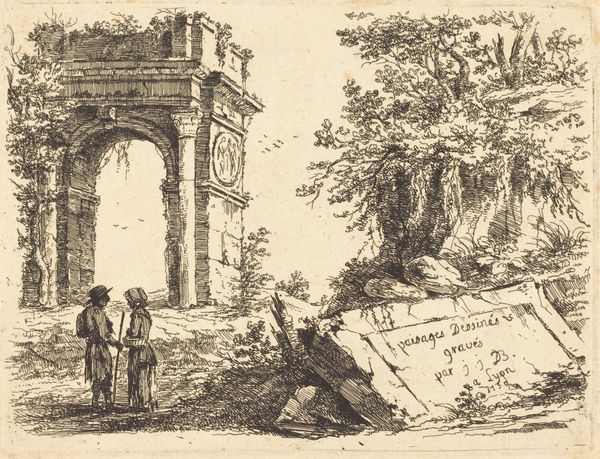
Copyright: CC0 1.0
Editor: We're looking at "Ruins" by Francesco del Pedro, housed in the Harvard Art Museums. It’s a stark landscape, emphasizing a crumbling structure. What does this piece say about the context in which it was made? Curator: This print reflects the 18th-century fascination with the classical past, particularly Roman ruins. It's not just about aesthetics, though. The image invokes questions about power, empire, and the transience of human achievement. Notice how the figures are dwarfed by the architecture? Editor: Yes, they almost seem to be passing through. Curator: Exactly. Consider the inscription, "Et redit ad nihilum, quod fuit ante nihil" - it returns to nothing, what was nothing before. What does that suggest about the permanence of human endeavors, and the role of art in depicting that? Editor: It makes you think about how civilizations rise and fall, and how art can serve as a reminder of that cycle. I didn't think of it that way. Curator: Precisely! Prints like these circulated widely, shaping public perceptions of history and Italy itself.
Comments
No comments
Be the first to comment and join the conversation on the ultimate creative platform.
